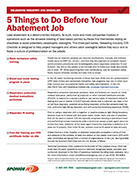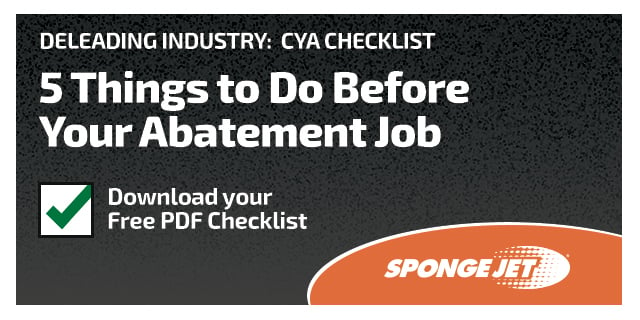Sponge-Jet has been used in lead abatement projects big and small - from the restoration of mill buildings to the historic restoration of the United States Capitol. A much different process than ordinary grit blasting, Sponge Media retains all the speed of lead removal with abrasive blasting but with substantially less dust generated during the process. Frequently, plants, facilities, or historical tourist destinations can operate in “business as usual” mode, feet from where abatement is taking place.
Fill out the form on this page to get the Sponge-Jet Deleading Pre-Job Checklist

Contractors can better contain operations when deleading with Sponge-Jet. Due to the pliant and porous nature of Sponge Media, abrasive rebound and ricochet are dramatically lower compared to ordinary abrasives. Sponge Media is less likely to puncture poly (or other plastic) containment; and thus, it greatly reduces containment failure and the unwanted dust migration to areas outside containment.
Lead Abatement and Industrial Deleading is a challenging job. Forced to tread carefully, abatement contractors must comply with local, state, and national regulations. Often, it’s hard to keep up with the changing laws.

We've put together a free checklist for our lead contractors - you can use it too.
The Checklists in this series can help avoid the common mistakes that end up getting lead contractors in trouble with OSHA and other regulatory agencies. Often these mistakes are not intentional. Frequently contractors run into issues when a step is forgotten. These checklists can help prevent a mistake, save time, hassle, and money.
Above all, observe all applicable, federal, state, and local deleading and lead abatement regulations. This checklist is meant to serve as a guide and should never replace the legal advice or guidance of lead experts in your area.


